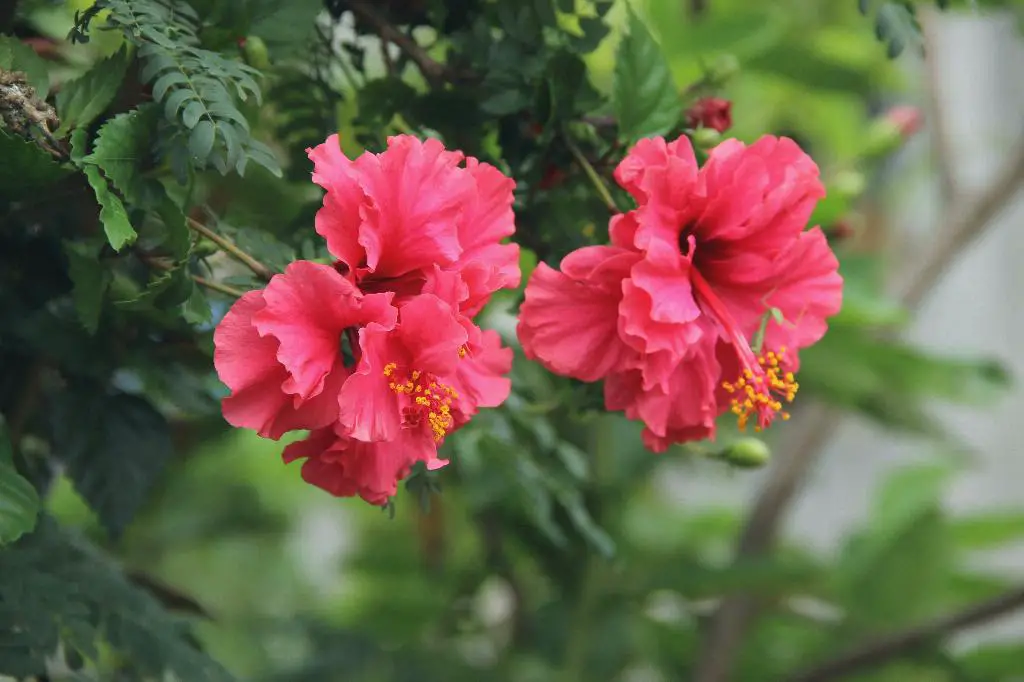Deadheading your hibiscus plants is a simple yet crucial task to ensure they continue to bloom beautifully throughout the season. By removing spent flowers, you promote new growth and encourage the plant to focus its energy on producing more blooms. In this article, we will guide you through the process of deadheading hibiscus plants effectively.
1. Timing is Key
When deadheading your hibiscus, timing is essential. It is best to do this task regularly throughout the blooming season to prevent the plant from wasting energy on seed production. As soon as a flower begins to fade and wilt, it is time to deadhead.
2. Locate the Spent Flower
To deadhead a hibiscus, start by locating the spent flower. Look for flowers that have faded in color and started to wilt. The goal is to remove these flowers before they go to seed, signaling to the plant to produce more blooms.
3. Cut with Precision
Using a sharp pair of pruning shears, trim the spent flower right behind the first joint below the bloom. Make sure to cut at a 45-degree angle to promote healthy regrowth and prevent water from pooling on the cut stem, which could lead to disease.
4. Promote New Growth
By deadheading your hibiscus plants, you are not only tidying up the appearance of the plant but also encouraging new growth. This process stimulates the hibiscus to produce more flower buds and continue blooming profusely.
5. Consistent Deadheading
Make deadheading a regular part of your hibiscus care routine to ensure continuous blooming. Regular removal of spent flowers will keep your plant looking vibrant and healthy, with an abundance of colorful blooms.
6. Monitor for Pests and Diseases
While deadheading, take the opportunity to inspect your hibiscus plants for any signs of pests or diseases. Early detection and treatment are essential to maintaining the overall health of your plants.
7. Feed and Water Appropriately
After deadheading, remember to provide your hibiscus plants with the right nutrients and sufficient water. Proper feeding and watering practices will support vigorous growth and blooming.
8. Prune for Shape and Size
In addition to deadheading, consider pruning your hibiscus plants for shape and size. Regular pruning helps maintain a compact and bushy appearance, promoting airflow and preventing overcrowding.
9. Enjoy the Fruits of Your Labor
As you continue to deadhead and care for your hibiscus plants diligently, you will be rewarded with a stunning display of vibrant blooms that will brighten your garden and bring joy to all who see them.
10. Share Your Knowledge
Don’t hesitate to share your expertise on deadheading hibiscus with fellow gardeners. By spreading your knowledge, you can help others cultivate healthy and flourishing hibiscus plants in their own gardens.
11. Experiment and Learn
Every gardener’s journey is unique, so don’t be afraid to experiment and learn from your experiences with deadheading hibiscus plants. Over time, you will develop a deep understanding of your plants’ needs and preferences.

12. Embrace the Beauty of Blooms
Finally, take a moment to appreciate the beauty of the blooms on your hibiscus plants. Your dedication to deadheading and caring for your plants has resulted in a visual masterpiece that enhances the natural beauty of your outdoor space.
